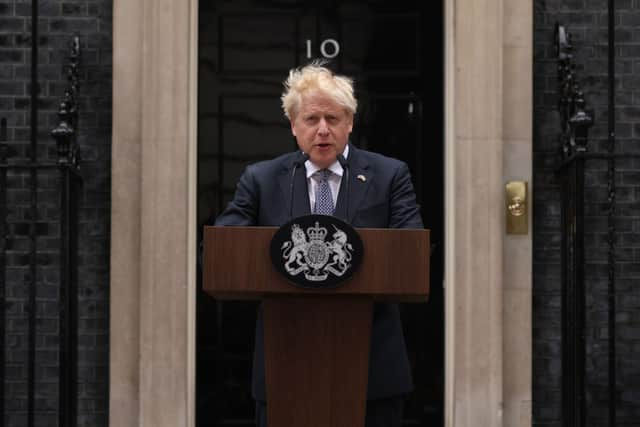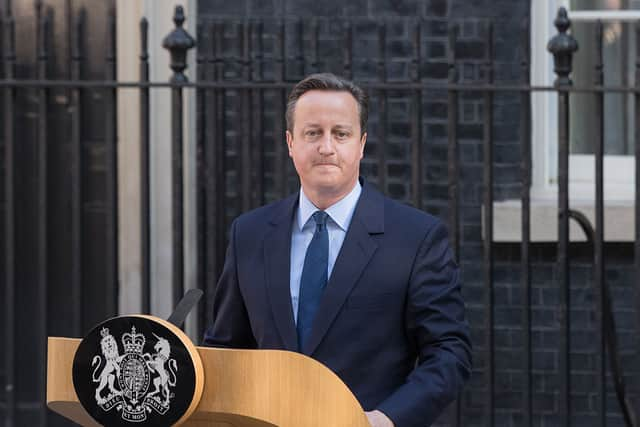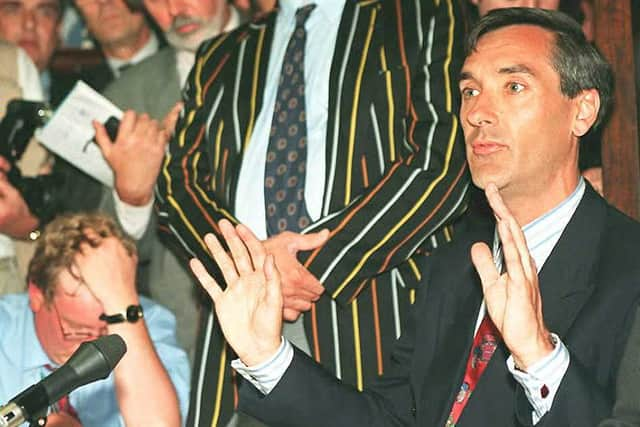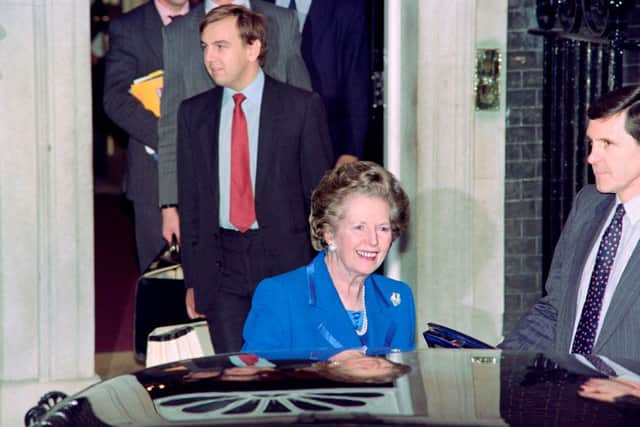How many UK Prime Ministers have resigned? Boris Johnson, Tony Blair and David Cameron resignations explained
and live on Freeview channel 276
Liz Truss has resigned as Prime Minister having been in office for just 44 full days.
Yet another Conservative leadership election will now take place to find a successor, with Rishi Sunak and Penny Mordaunt two of the names currently being discussed by Tory MPs. One of the other people set to put their name in the hat for the top job is one Boris Johnson.
Advertisement
Hide AdAdvertisement
Hide AdLiz Truss’s predecessor was ousted from office in July after the Chris Pincher scandal. However, he has remained popular with Conservative Party members and some MPs - most notably Nadine Dorries.
By resigning mid-term, Truss joins a list of several other Prime Ministers who were forced out of office outside of a general election defeat. NationalWorld has put together a quick history of the six other UK PMs since 1979 who were forced to resign mid-term.


Boris Johnson
Having secured a Conservative landslide victory in the 2019 general election off the back of a promise to ‘Get Brexit Done’, Johnson was riding high in the polls for much of his first nine months in charge. However, scandals about lying to the Queen and proroguing Parliament foreshadowed what was to come.
Despite having a manifesto committing his government to ambitious targets to ‘level up’ the UK, particularly northern parts of England, Boris Johnson never got much of a chance to follow through on his plans because of the Covid pandemic, which hit in March 2020. When he did have the opportunity to begin implementing his agenda, he was hit by multiple scandals, some of which were as a direct result of his actions.


Advertisement
Hide AdAdvertisement
Hide AdFirst came the Owen Paterson affair in October 2021, when the government whipped its MPs to defend the disgraced politician before being forced into a humiliating climbdown. Then, weeks later, claims emerged of numerous alcohol-fuelled parties having taken place in Downing Street during the various Covid lockdowns. The Partygate scandal dominated the final months of Johnson’s time in office.
A trickle of no confidence letters eventually led to a confidence vote in Johnson in June 2022. Despite winning, his authority over his party was weakened. When, little more than a month later, allegations surfaced that Johnson had not appropriately handled sexual assault allegations against deputy chief whip Chris Pincher, it led to dozens of ministerial resignations.
Johnson initially tried to cling to power. But after substantial political pressure from MPs, he resigned. In his resignation speech, he took aim at his own party.
Theresa May
Despite enjoying a strong start as PM, Theresa May was weakened after a disastrous 2017 general election campaign led to a hung Parliament. With a minority government propped up by the support of Northern Ireland’s DUP, she was repeatedly unable to get the Brexit deal she had negotiated through the House of Commons.
Advertisement
Hide AdAdvertisement
Hide AdThis was because there was no clear majority among MPs on the issue of whether the UK should remain in the EU, stay in some parts of the bloc but leave others, leave with May’s negotiated deal, or sever ties completely in a ‘hard’ Brexit.


While this dented her authority, the final blow came when she attempted to break the deadlock in May 2019 with a Brexit bill that legislated for a second referendum. Brexit supporters on the Conservative backbenches were enraged by the legislation, members of her Cabinet publicly opposed it, while her 2016 leadership rival Andrea Leadsom quit the Cabinet.
All of these factors forced Theresa May to step down. In an emotional address in May 2019, Mrs May announced she was resigning as Conservative Party leader. She continued to serve as PM in a caretaker capacity until 24 July 2019.
David Cameron
David Cameron had just won a majority in the 2015 general election after years of coalition government. Concerned with the rise of Nigel Farage’s UK Independence Party - a Eurosceptic political party to which two Tory MPs had defected in 2014 - Mr Cameron pledged in advance of the election to hold a referendum on the UK’s membership of the EU if the Tories won a majority.


Advertisement
Hide AdAdvertisement
Hide AdHe fired the starting gun on the vote in February 2016, with the referendum scheduled to take place on 23 June. The campaign between the Leave and Remain groups quickly became a bitter scrap and, by the time of the vote, it had partly become a referendum on David Cameron’s leadership.
It meant that the day after Vote Leave won, Cameron felt compelled to resign. However, he remained in office in a caretaker capacity until 13 July 2016, when Theresa May took over the Conservative Party leadership.
Tony Blair
The Labour leader’s time as Prime Minister began brightly but his popularity faded as his Premiership got deeper into the noughties, particularly as a result of the Iraq War. By 2007, his relationship with his Chancellor and one-time key ally Gordon Brown had completely deteriorated.
The source of the tension between the pair came down to a long-term unofficial pact dating from the 1990s. In 1994, Brown had agreed to step aside in the Labour leadership election so that Blair could win.
Advertisement
Hide AdAdvertisement
Hide AdIn exchange, Blair promised to step down as PM and hand over the reins to Brown if he made it to a second term as Prime Minister. However, it took Blair until 27 June 2007 to step down, despite having won a third term in office in 2005.
John Major
While John Major never resigned as Prime Minister - serving from 1990 until the 1997 general election - he did resign as leader of the Conservative Party in 1995. His resignation was prompted by a febrile atmosphere within his party, particularly on the issue of the European Union.


In a bid to stamp out division among his Tory MPs, Mr Major triggered a leadership contest he went on to comfortably win against leading Eurosceptic John Redwood. However, the 1997 election proved disastrous for the Conservatives and they didn’t return to power until 2010.
Margaret Thatcher
Margaret Thatcher’s time in office was hugely divisive, but she enjoyed solid support from her Conservative MPs for much of her reign as Prime Minister. Things fell apart for the UK’s longest-serving PM of the 20th century when her long-time Cabinet ally and deputy Geoffrey Howe resigned from the government in November 1990.
Advertisement
Hide AdAdvertisement
Hide AdHe cited the unpopular poll tax - and Mrs Thatcher’s opposition to greater European integration - as reasons why he quit, during a frantic session of Prime Ministers Questions. These views were echoed by increasingly restless backbenchers.


Weakened by Howe’s departure, she then faced a leadership contest days later against Michael Heseltine. While Thatcher won by 204 votes to 152, it wasn’t enough of a majority to win outright under Conservative Party rules at the time, and she was due to face Heseltine again in a second round.
Despite initially saying she would contest the second ballot, she withdrew after discovering she did not have the full support of her Cabinet. She tearfully resigned just days later, handing over 10 Downing Street to John Major on 28 November.
Comment Guidelines
National World encourages reader discussion on our stories. User feedback, insights and back-and-forth exchanges add a rich layer of context to reporting. Please review our Community Guidelines before commenting.
